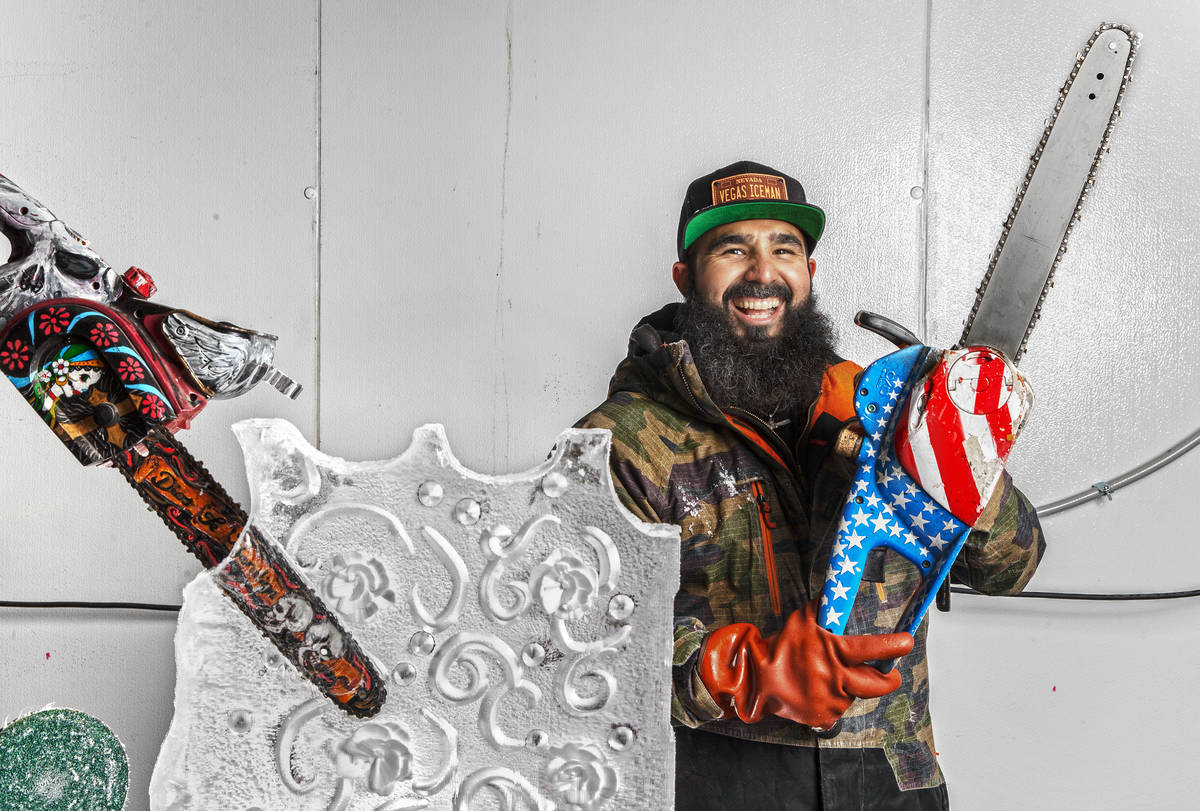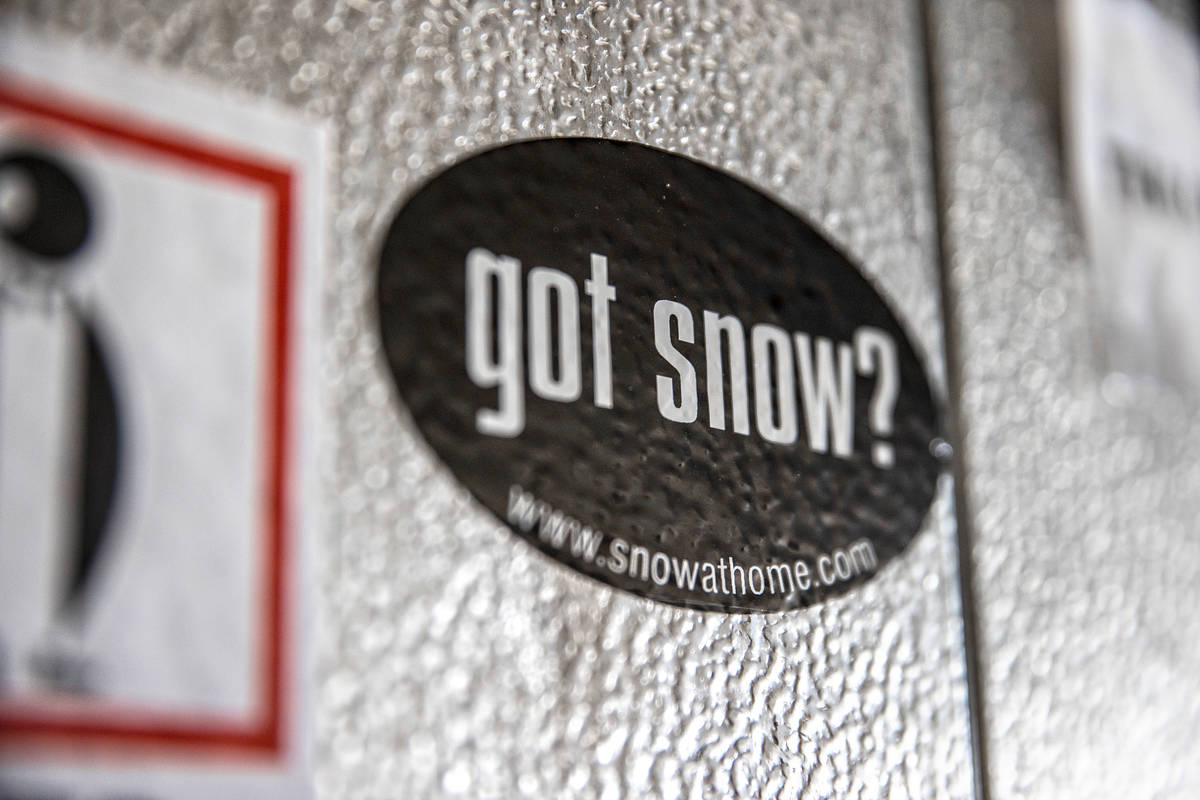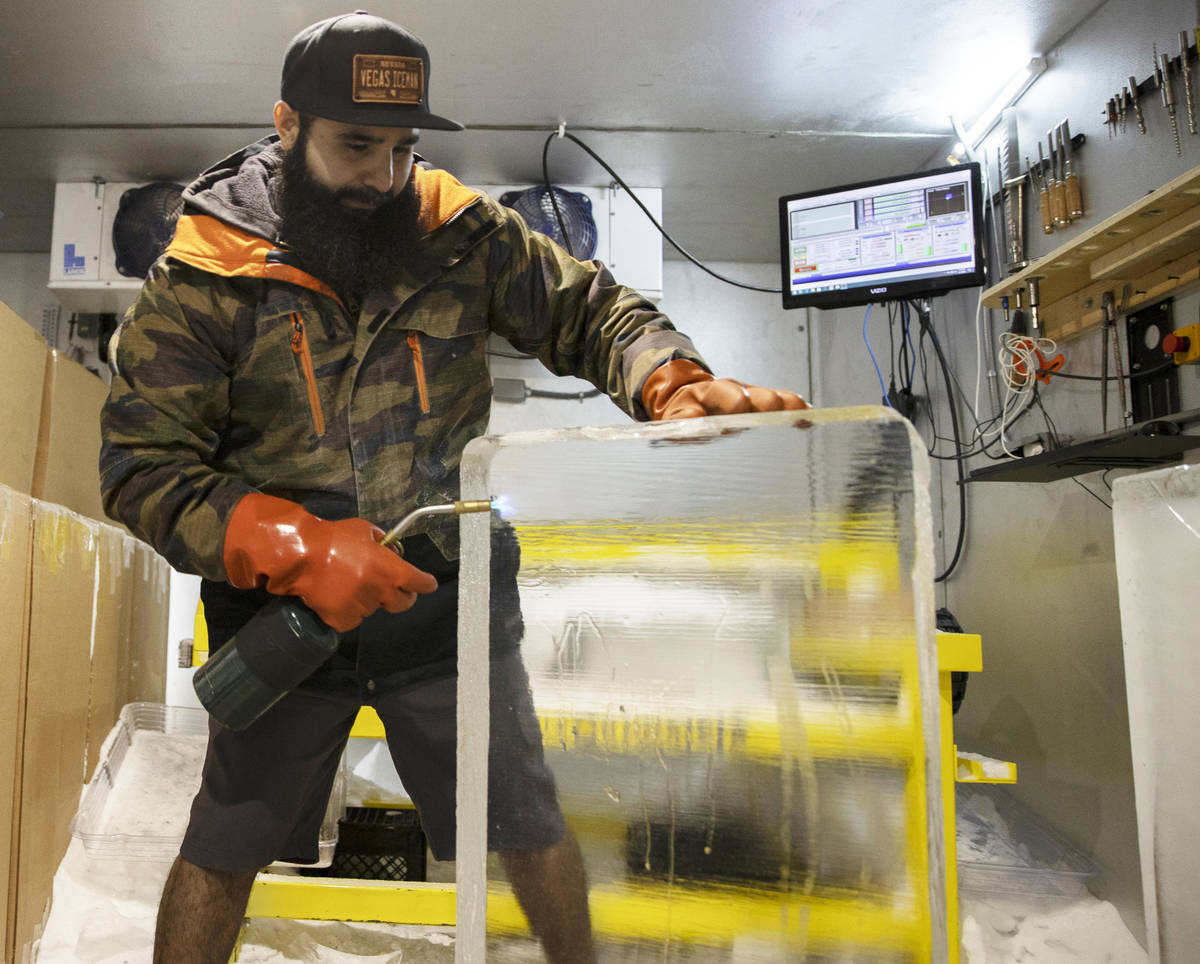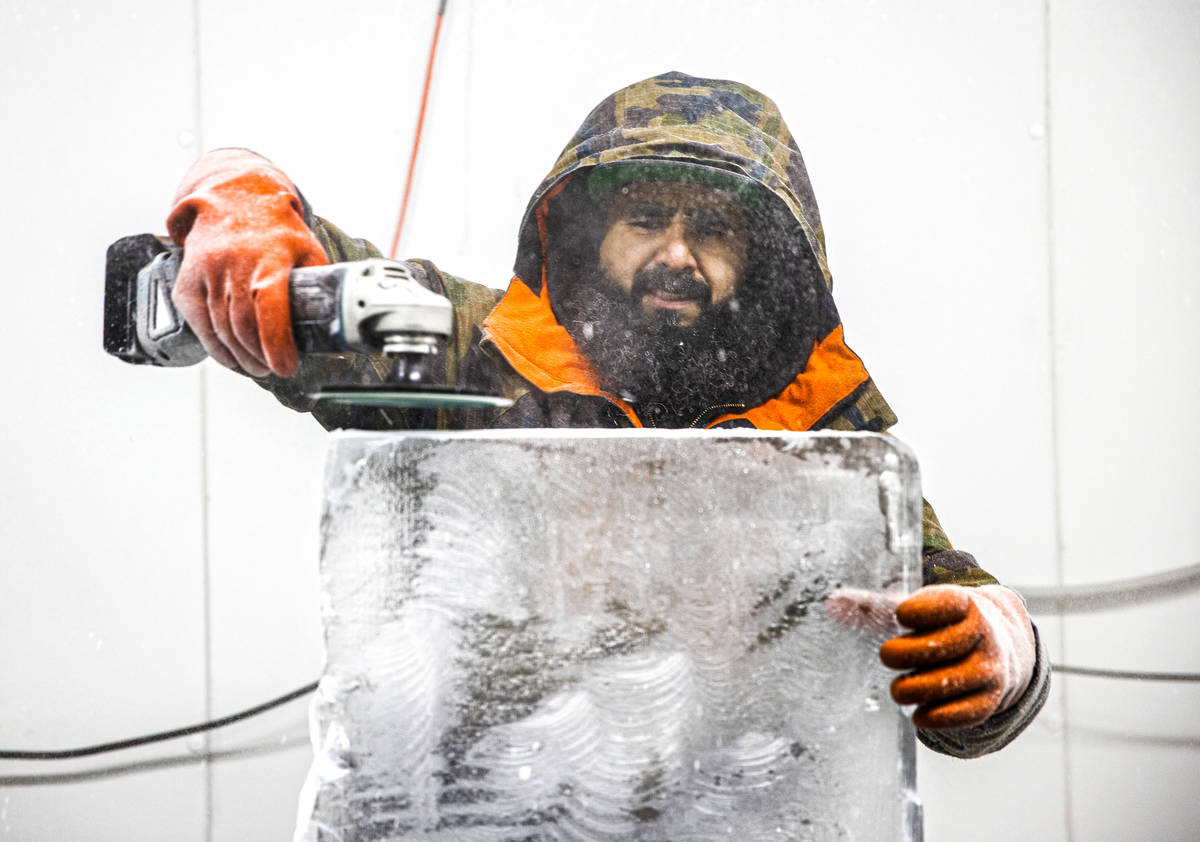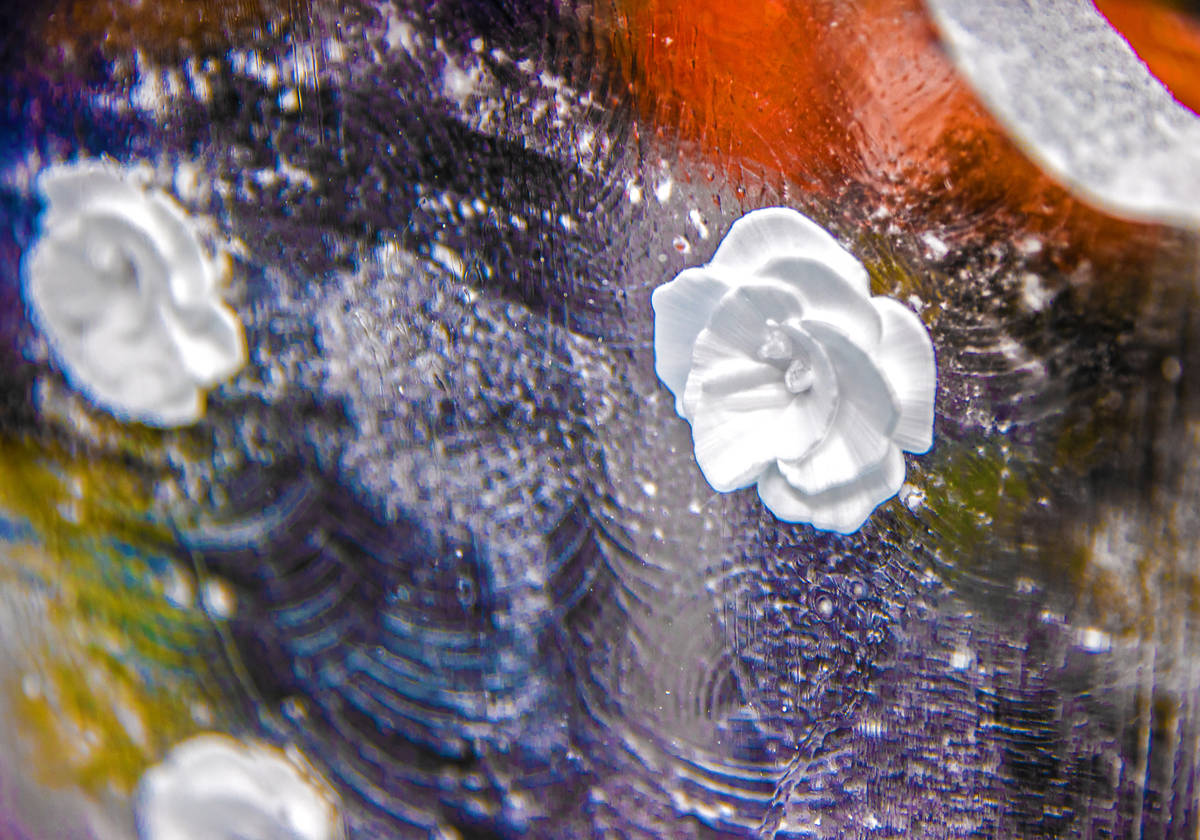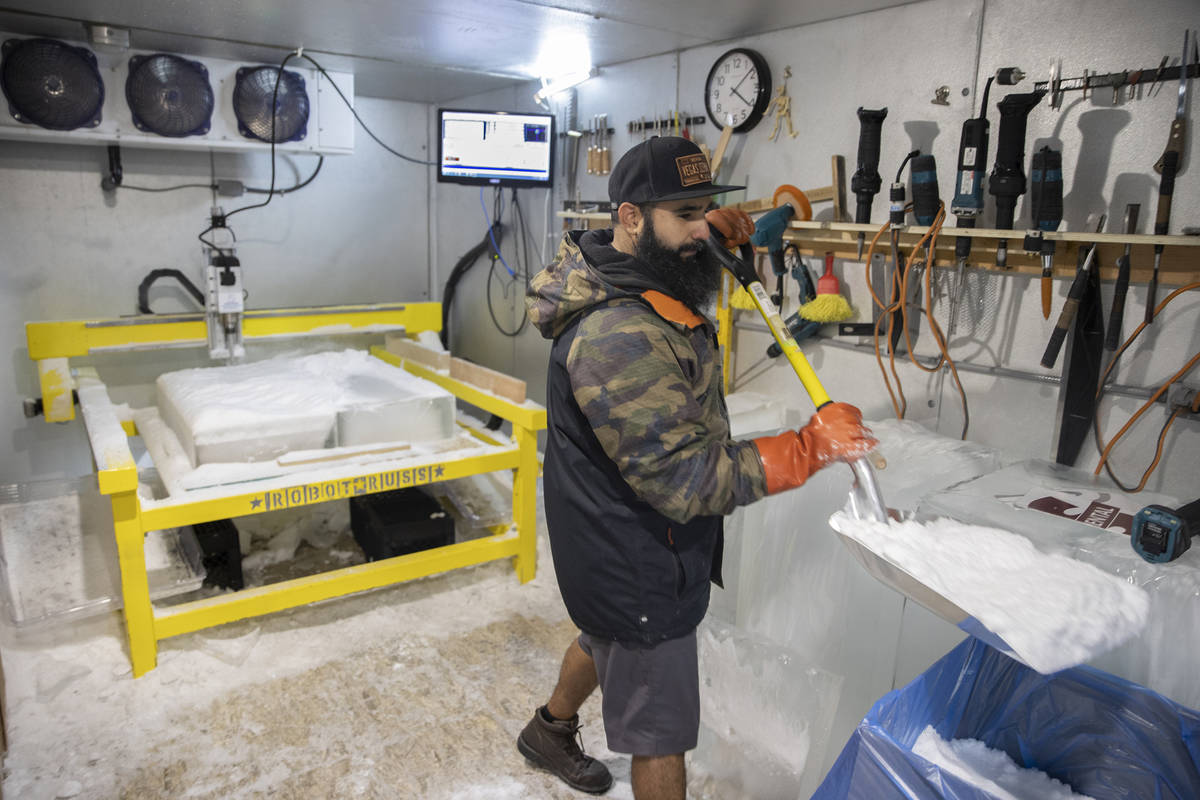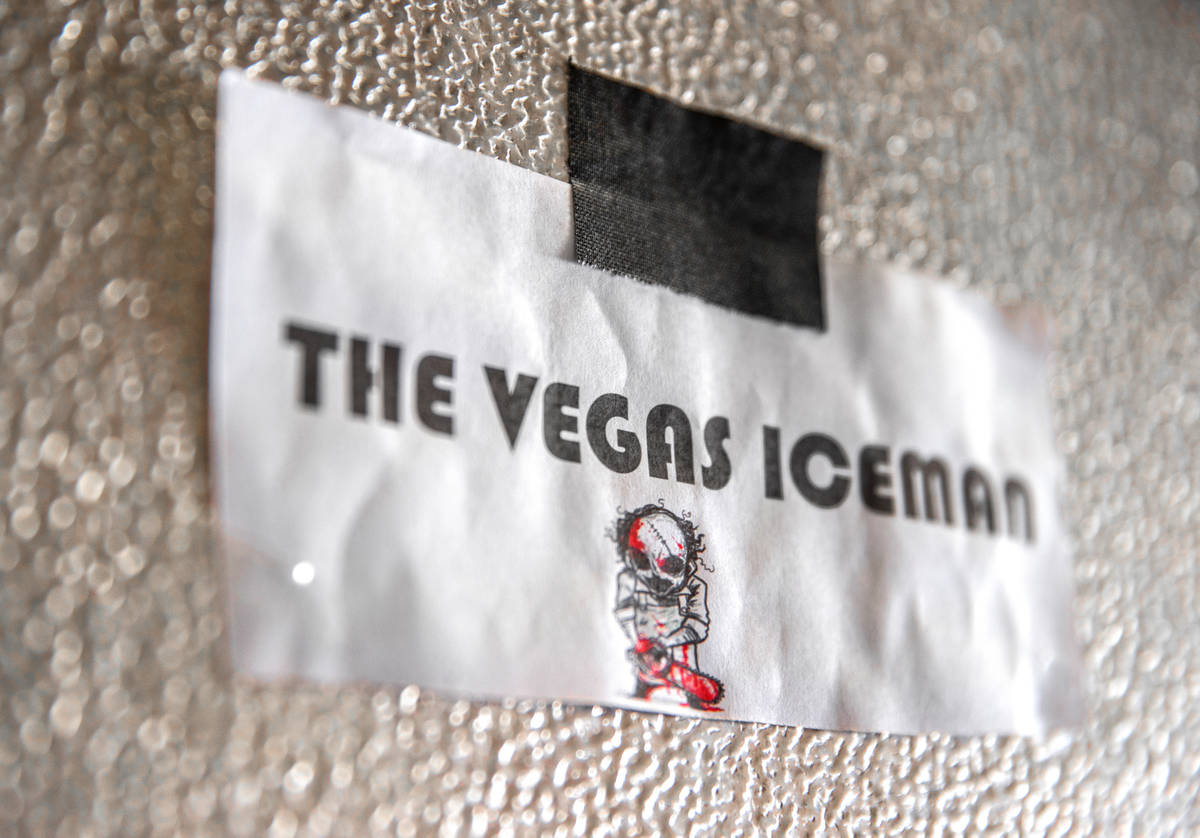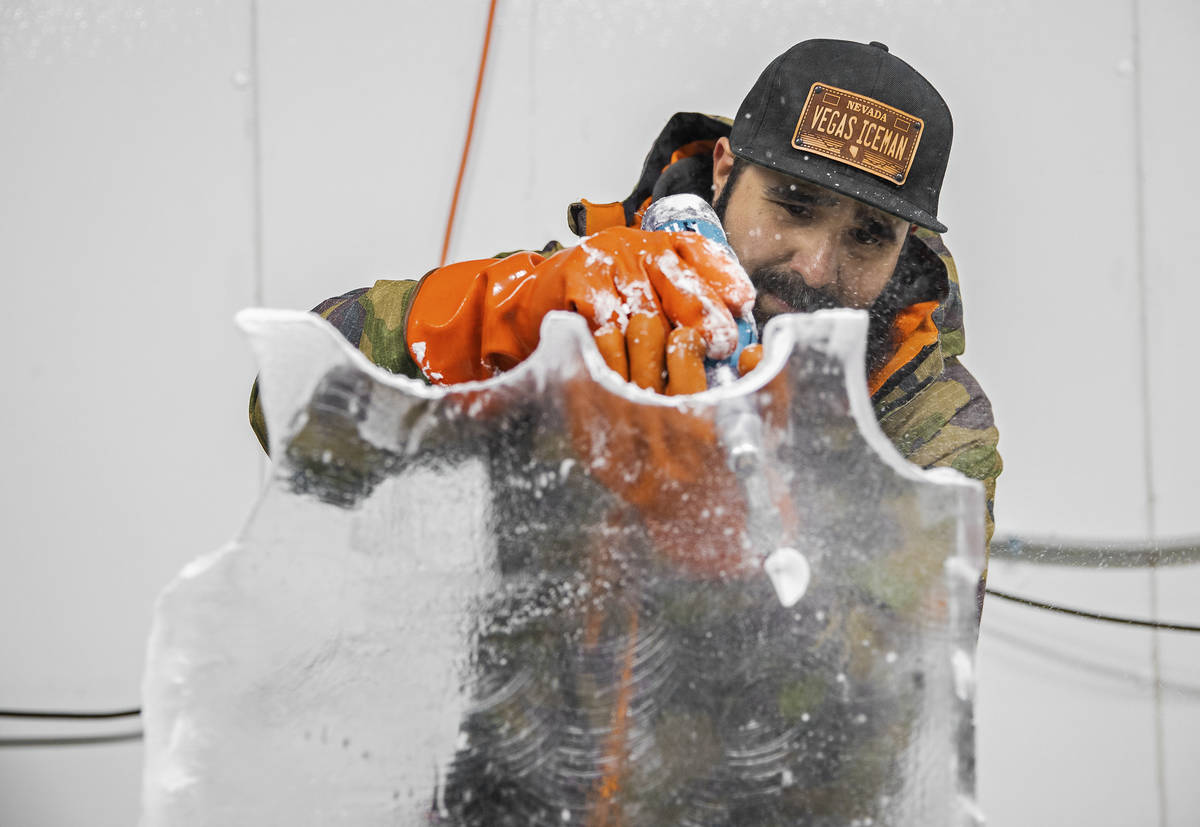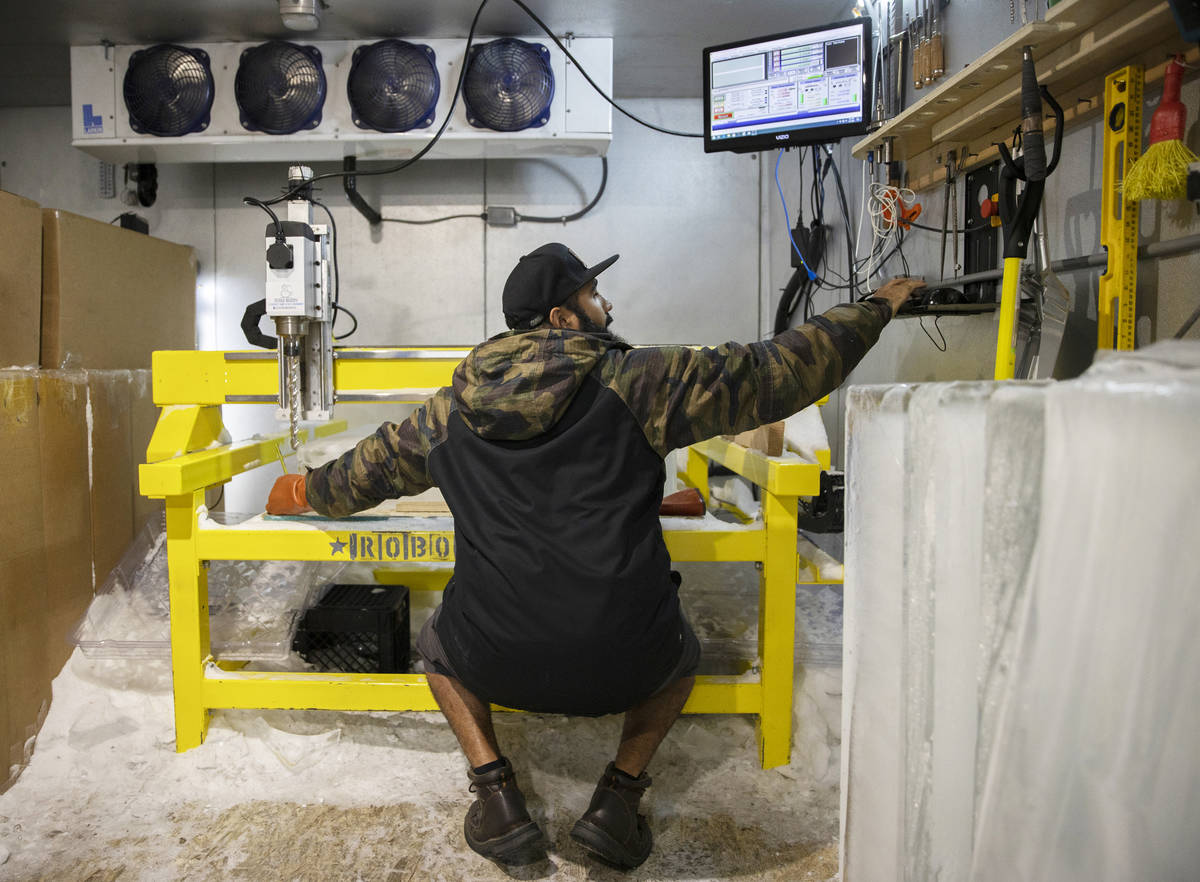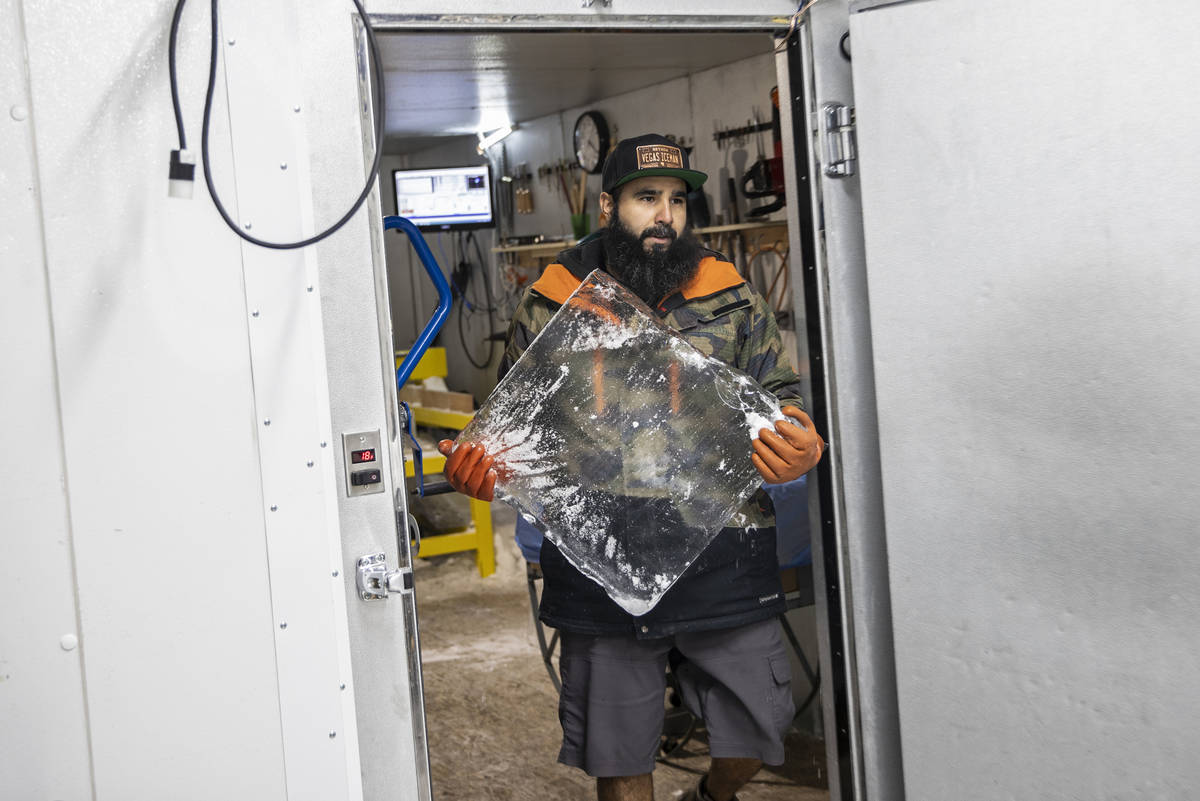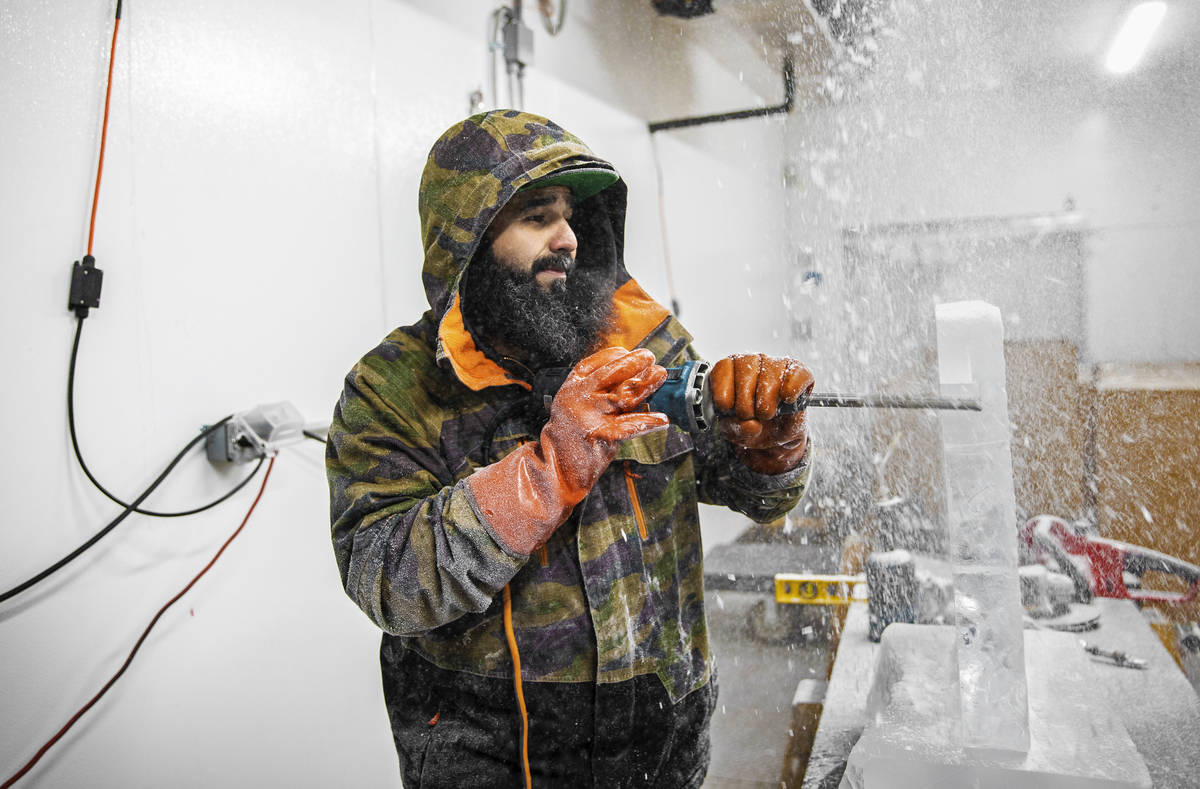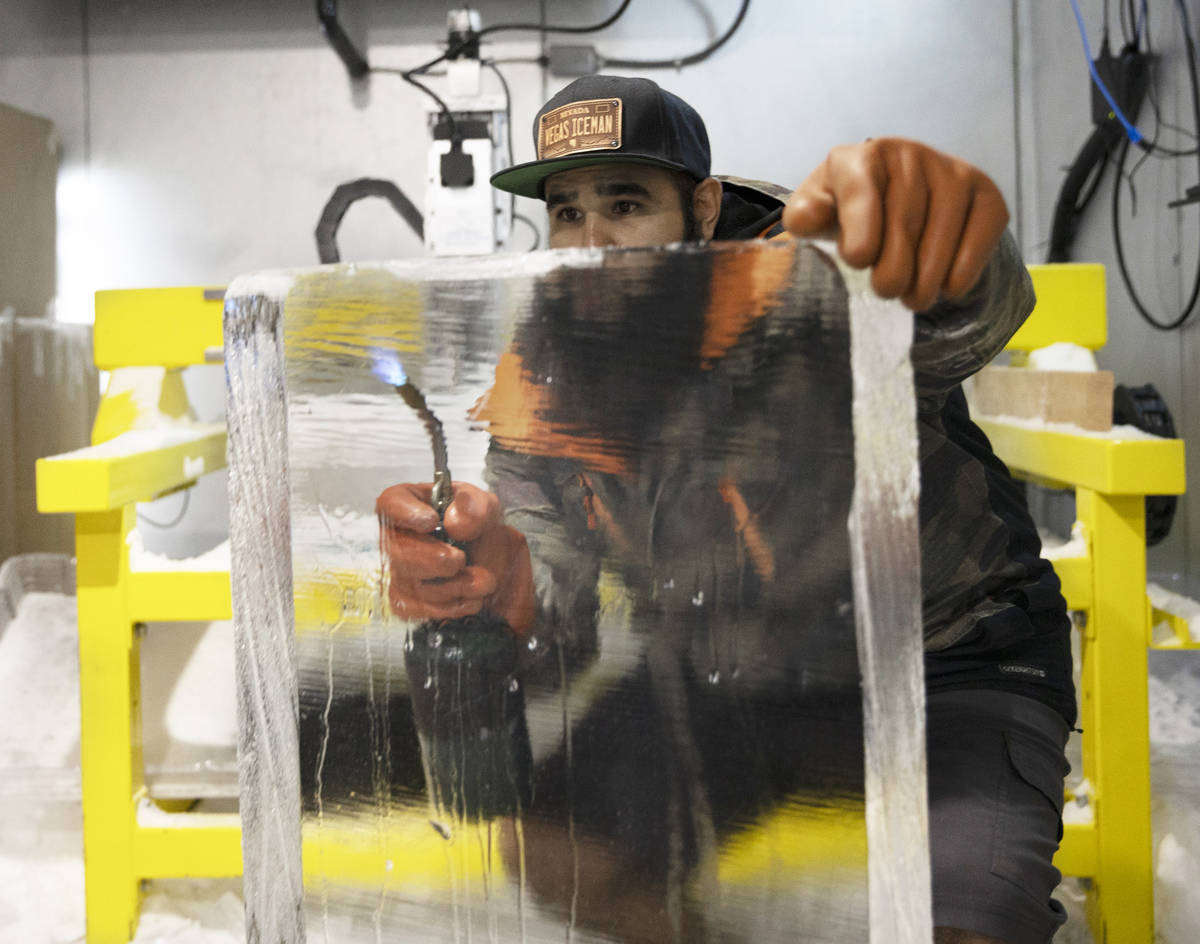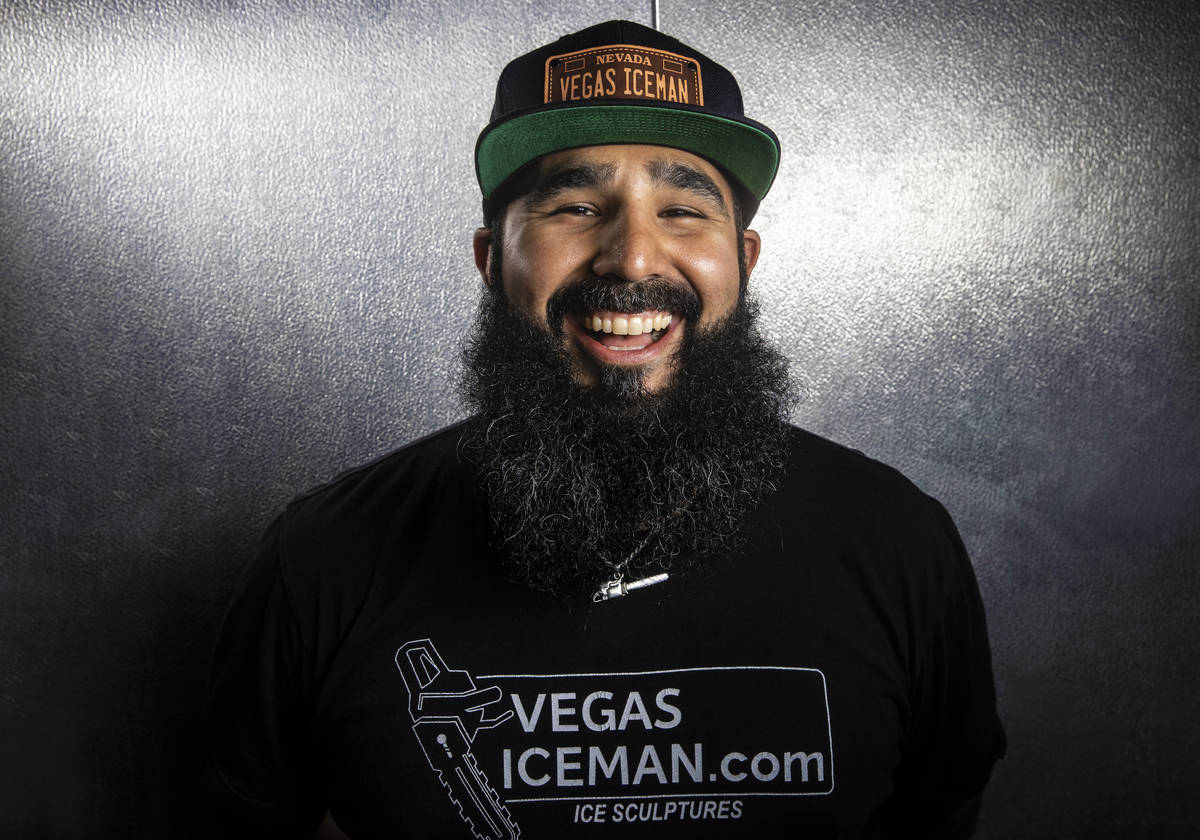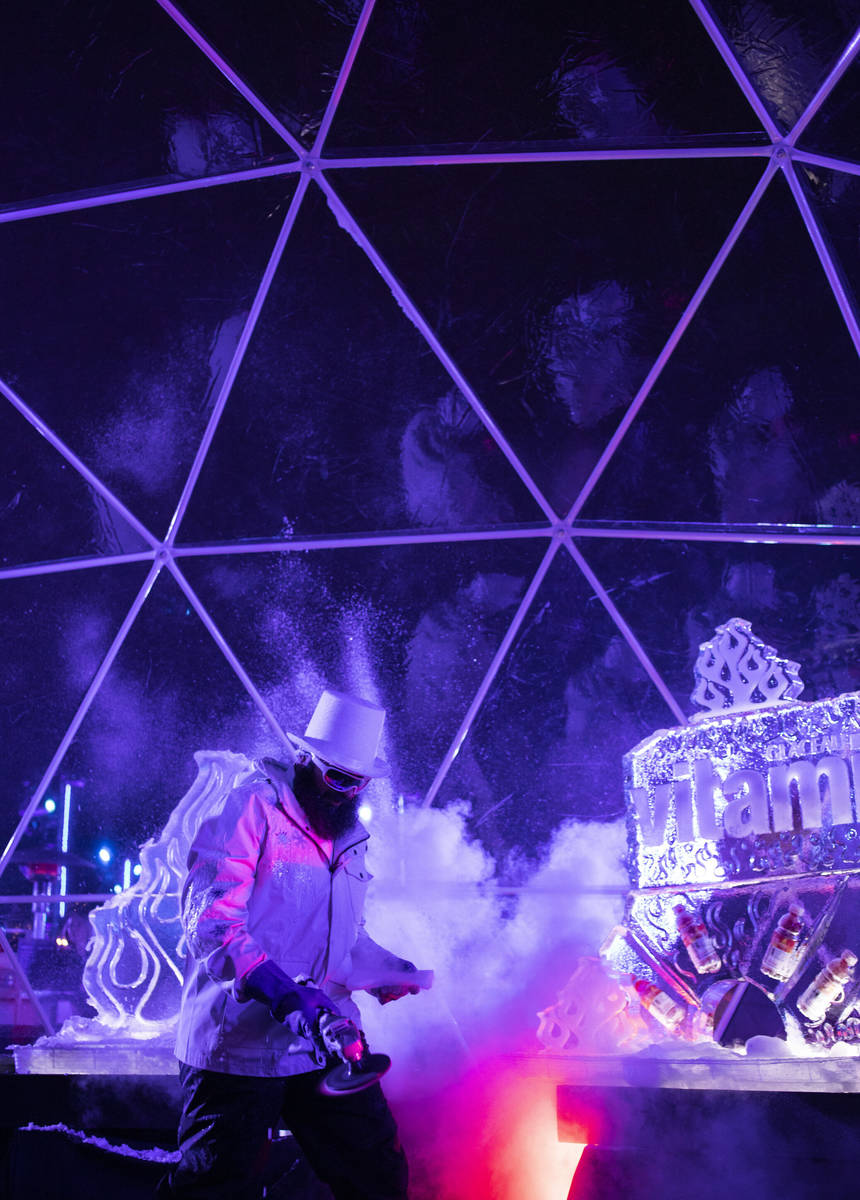As pandemic freezes business, Las Vegas artist turns to selling snow
Marco Villarreal has one of the coolest jobs in Las Vegas.
Literally.
The ice sculptor with a rock ’n’ roll flair works in an office that’s a refreshing 18 degrees year-round.
He just hasn’t been spending nearly as much time in there this summer considering that corporate events, which account for 85-90 percent of his business, have all but evaporated during the pandemic.
Villarreal has launched Snow Buddy, a new enterprise delivering 70 pounds of snow and activity kits for kids to play with during the blistering heat. So far, though, that’s mostly just helping him tread the financial waters.
After several years of growth and pouring his profits back into his small business, Villarreal has had to turn off some of his equipment for the first time.
“If you imagine, we have freezers and ice makers, and everything has compressors. So the humming mechanics in it is really loud,” he explains. “So once you start shutting stuff off, the eeriness of just being quiet is like, ‘Oh.’ So you’re just sitting there like, ‘This is being taken away from me, and it’s not my fault.’ ”
You can’t plan for a pandemic
Many Las Vegans, especially artists and entertainers, are struggling to make ends meet as we approach the first Labor Day of the COVID-19 era. Villarreal, 38, is no stranger to financial insecurity. Even during the best of times, he admits, an ice sculpture often is the first piece of an event to be scrapped whenever organizers reassess their budgets.
After culinary school, Villarreal relocated to Las Vegas in 2006 and found a job carving ice, only for the Great Recession to leave him unemployed.
He worked as a butcher and sold timeshares at the Jockey Club to pay the bills before re-entering the ice sculpting field on his own, part time, in 2010. In 2016, Villarreal moved into a bigger shop, bought more machines, acquired larger freezers and made his side project, The Vegas Iceman, a full-time job.
High-profile gigs soon followed. In 2018, he sculpted an 8-foot Venom celebrating the movie for Sony’s CinemaCon party at Caesars Palace. Last December, Villarreal brought drums made of ice — something he tries to incorporate into every live performance, whether it’s one or two for him to bang around on or a full set with a percussionist — for an exhibition at the Intersect festival headlined by Foo Fighters.
Things were going great until 2020 rolled in like a belligerent drunk looking to stir up trouble.
Villarreal lost out on $170,000, and some of his biggest jobs yet, just from March through May as events he’d been preparing to work were canceled.
Since the pandemic hit, he’s had one paid sculpting job.
“I planned for low months and for downtime,” he says. “I just never planned for zero.”
More than 140,000 jobs lost
Zero is exactly how many convention attendees the Las Vegas Convention and Visitors Authority clocked from the beginning of April till the end of July, the last month for which numbers are available. By comparison, 2.06 million conventioneers traveled to Las Vegas during that period last year.
Las Vegas’ economy, forever dependent as it is on tourism and events, shed 142,200 jobs — 82,700 of them in the entertainment and hospitality fields — during the 12 months ending in June, according to the U.S. Bureau of Labor Statistics.
“Pre-COVID, it was an $11 (billion) to $12 billion sector of our economy that generated over $3 billion in wages and salaries that got paid to local workers,” Jeremy Aguero, a principal analyst with the Las Vegas-based Applied Analysis, says of the conventions and corporate meetings that employed 65,000 to 70,000 across the valley.
“Everybody sort of focuses on … the employees that were laid off by a major hotel operator,” Aguero adds. “But sometimes they overlook the fact that thousands of employees work in business and professional services. Thousands of employees work in trade and transportation. There’s everything from education to health care to construction that goes to setting up and tearing down or providing services to these conventions or these corporate meetings, all of which ripple through our economy.”
‘Survival mode’
Without corporate events, Villarreal basically is back where he started.
The three part-time employees are gone. The six installers and delivery helpers are no longer on call. His wife, Megan, who quit her office job a year ago to handle the business’ administrative duties, started working for her former employer again Monday. It’s a way for her to provide a steady income while home-schooling their three young daughters.
“It didn’t really hit me until June, when it went from feeling very temporary to feeling really permanent,” Megan, 39, says of the lack of sculpting jobs. “It was a rough month for me.”
Villarreal ’s electric bills routinely top $1,000 a month, so he consolidated his freezers and unplugged whatever he could.
“That’s all it is, right now,” he says of the cost-saving measures. “We’re in survival mode.”
The fragility of tourism
With no end to the pandemic in sight, it could be awhile before the city’s convention business returns to normal.
“I do think, in the short term until we can see what happens with this virus, that organizers are going to continue to hold hybrid events. Maybe it’s half live and half virtual,” says Cathy Breden, CEO of the Center for Exhibition Industry Research. “Rather than a company sending five or six staff, maybe they’ll only send two. So, I see attendance numbers being lower at least through 2021.”
Those conventions probably will have fewer bells and whistles, because exhibitors initially will be more cash conscious, adds Breden, who also serves as the executive vice president and chief operating officer of the International Association of Exhibitions and Events. “Quite honestly, nobody has any money right now.”
Aguero, the analyst, sees a four-year path to reaching pre-COVID convention levels — longer than the 18- to 36-month recovery he forecasts for the rest of Las Vegas, due to the time it takes to plan such large-scale events.
Despite recent progress, he says the local economy, with its reliance on tourism and travel, remains among the least diverse among cities its size in the country.
“Back in the 1920s, they were saying we should diversify. It’s literally been a hundred years,” says David G. Schwartz, gaming historian and associate vice provost for Faculty Affairs at UNLV. “This is why it’s so important. Tourism is lucrative but fragile, as we’re seeing.”
“People can still, I think, survive and fight back,” Schwartz says of owners whose businesses remain tied to travel. “They just have to be creative and not give up.”
The Willy Wonka of ice
That creativity is on display with Snow Buddy.
Once just the byproduct of Villarreal’s ice carving, which he would take home for his daughters to play with or give away to friends and neighbors, that snow is all The Vegas Iceman has going right now.
“It’s keeping the lights on, the freezers on, and waiting for those one or two side ice projects to come through,” Villarreal says.
Each $50 Snow Buddy order contains two 35-pound boxes of snow that Villarreal says will withstand about two hours of playtime in the shade. For an extra $12, activity kits will help customers dress their snowpeople as pirates, princesses or unicorns.
That snow, no longer an afterthought, is the result of some serious tinkering.
The speed of the router as it works its way through a 300-pound block of ice can change the snow’s consistency, Villarreal says. He found the filtered water he uses to produce clear ice for sculpting makes for inferior snow.
“I’m sitting there. I’ll taste it. I’ll touch it,” he says of his snow recipes. “I’m almost like Willy Wonka trying to make the right chocolate.”
Now that he’s perfected the product, Villarreal plans to keep Snow Buddy as a side business once things are back to normal and he can return to his true passion. He first noticed ice sculptures as they were rolled through the kitchen he worked in during high school in San Antonio, and he’s been in love ever since.
Villarreal dreams of having his own ice-sculpting performance show on the Strip one day, something that would let him combine his talents with the in-your-face theatricality — including costumes, his star-spangled chainsaw and a penchant for AC/DC’s “Thunderstruck” — he often brings to his live demos.
At this point, though, he’d settle for just the monotony of the day-to-day logistics that go into presenting his art in an inhospitable climate.
“It’s intense, and it gets stressful,” Villarreal says of his craft. “But at the end of the day, when you look back … at your camera reel, you’re like, ‘Whoa! I did that.’ ”
Contact Christopher Lawrence at clawrence@reviewjournal.com or 702-380-4567. Follow @life_onthecouch on Twitter.



